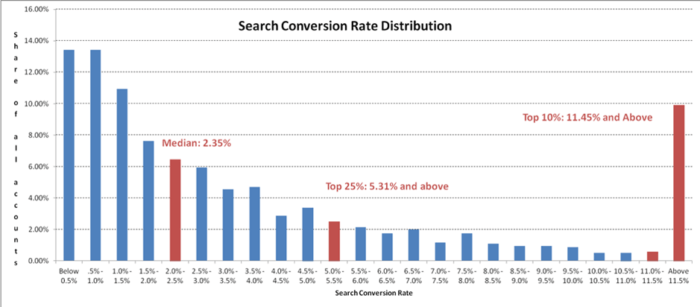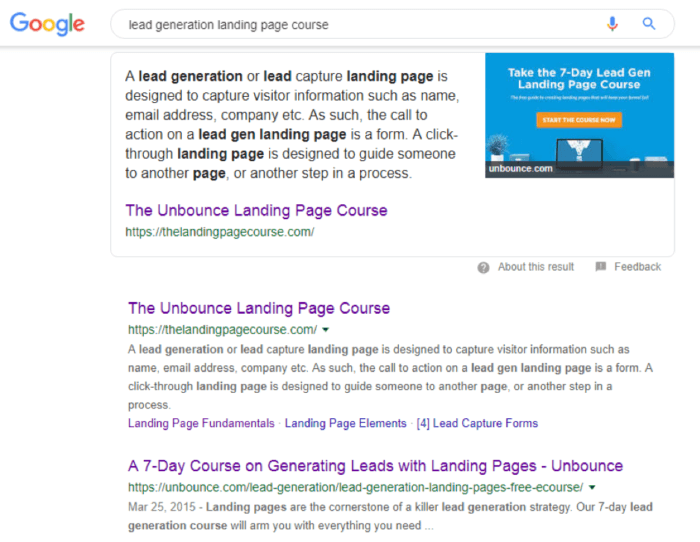high-converting landing page
Creating high-converting landing page
You need a landing page—a great, high-performing landing page that converts a high percentage of visitors.
You need to capture leads. You need customers your solution is high-converting landing page
To put it another way, landing pages are crucial. Fantastic, effective landing pages with a high visitor conversion rate.
However, take this into consideration:
The average conversion rate of landing pages is 2.35%.
How can you create your landing page to exceed this average and convert at a far higher conversion rate?
For example, how can you achieve 11.45% or above and still be in the top 10?
One of the most crucial steps in building a high-converting page is making sure you start with a great design by adhering to landing page best practices.
1. Select the appropriate landing page creator
Using the appropriate tools is the first step towards creating a landing page that converts visitors into leads. By doing this, you can effectively communicate your ideas on your landing page.
Of course, the landing page builder you choose will depend on your needs. For instance, if you use WordPress and you’d like to build a landing page without leaving your dashboard, Elementor is a great option for this.
For one-person operations, the WordPress plugin can be downloaded quickly and used to create a free landing page design directly within WordPress, with over 300 customizable templates to choose from. An easy-to-use drag-and-drop editor can also be used to edit and customize the landing page’s mobile version.
However, if you run an agency, a landing page like Unbounce would be more suitable, as it caters for this type of businesses. Unbounce provides tools like A/B testing, page duplication across different campaigns, and dynamic text replacement for your paid ad campaigns.
2. Simplify your landing page.
When it comes to creating a landing page, this best practice will never go out of fashion. That’s because a simple, uncluttered page makes it easy for visitors to understand your page offer and find your CTA button.
This is the most crucial question to ask yourself when creating your page: If you make your page too busy and complicated, you are more likely to confuse visitors than to get them to convert.
What are the essential components that encourage visitors to convert?
Only have these elements on your page.
3. Your landing page should have compelling copy.
Landing pages typically contain just a few words, but those words have the power to significantly impact conversions. Is the copy on your landing page about your offer sufficiently clear? Is it persuasive enough to persuade people to act?
Being unclear is the last thing you need in this situation. Likewise, this is where you should bring up any special feature that sets your product apart from the competition for your audience.
4. Recognize the needs of your guests
Not every business can benefit from a single-page design. This is due to the fact that needs differ among various business kinds and industries. While creating a landing page, you have to understand what potential leads need to see on this landing page to convert.
For example, look at this Airbnb landing page:
This page is for those who want to host guests in their homes. As you are already aware, the majority of home-sharing participants do so in order to receive financial compensation. Consequently, it makes sense that Airbnb offers a calculator to assist potential hosts in estimating their earnings—a brilliant move that will encourage guests to stay and become converts.
5. Remove navigation bars
A landing page should be focused on converting your visitor; you need to keep people on your landing page until they take action and not, like with your blog or other pages on your website, get them to visit multiple pages. With this in mind, your navigation bar is a distraction that could bring your conversion rates down.
Think about it this way: every outbound link on your landing page is an opportunity for visitors to leave without converting. Now, the surprising statistic is that only 16% of landing pages are without navigation bars.
6. Have a lot of white space
You need to leave space between each of the various elements on your landing page so that the copy is easy to read and understand. It should take a visitor no more than a few seconds to review your offer and determine whether it is right for them.
7. Make use of a clear CTA button
Conversions can be reached via your CTA button. Visitors should therefore be unable to miss it when they visit your page.
Similarly, your call to action should be associated with the offer on your landing page instead of just saying “submit,” as this helps the visitor understand exactly what they need to do.
If you visit this landing page from Trulia, you’ll notice it’s impossible to miss the CTA button:
Not only is it immediately apparent when you visit the page, but it also sticks out due to the red contrast against the faded background. Moreover, it illustrates the benefit of clicking on the button (i.e., receiving a customized estimate).
8. Make use of images
A picture speaks a thousand words, as they say. On your landing page, this might indeed be the case. Pictures and videos draw people in and have the power to encourage them to act.
Visuals can be used to support your page copy or, at the very least, convey the message of your landing page.
9. To increase trust, use social proof
How do you get people to trust your company and give you their information? Show them the benefits that your business has brought to others. In this manner, a prospective client can see the advantages that your company offers them as well.
10. Make use of a lead magnet
You must first offer value if you hope to receive real leads. This is the point at which lead magnets are discussed.
What are some urgent issues that you can quickly resolve for your potential leads? To address this issue, produce some content or extend an offer, then utilize it as a lead magnet.
11. Optimize your page for search engines.
Search engine optimization is essential if you want to send relevant, free traffic to your landing page. All you have to do is carry out keyword research to find a valuable target keyword.
In the search results for “lead generation landing page course,” this page came up top.
And that implies that they can obtain leads automatically and with little effort on their part. That course will always appear first in search results when someone uses those keywords, which could result in a significant volume of traffic from search engines. To add to that, appearing first in search results can increase people’s confidence. After all, Google clearly has faith in you and your content.
12. Test your landing pages using a split strategy.
To put it simply, testing is an ongoing activity that you must perform to increase conversions. Numerous, numerous tests. To find out which landing page performs the best, you must A/B test your page’s elements one at a time, track conversions for each change, and make the necessary adjustments along the way.
If you wish to continuously increase your conversion rate, A/B testing is a process that you must undertake on an ongoing basis. Unless most of your visitors are converting (and that very rarely, if ever happens), then there’s always room for improving your conversion rate.
To sum up
It takes a lot of planning and experience to create a landing page that converts well. But by following the landing page best practices listed in this article, you’ll know exactly what elements you’ll need to include in order to build high-converting landing pages for your own business.




















